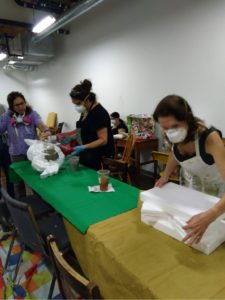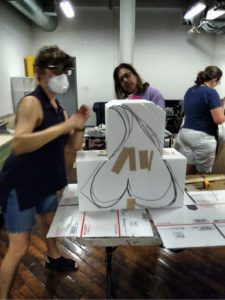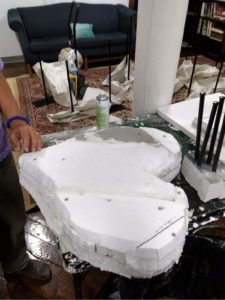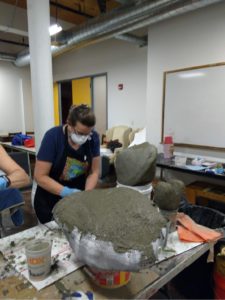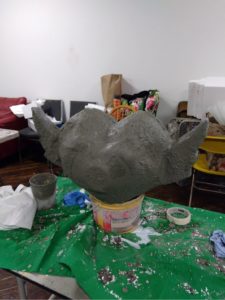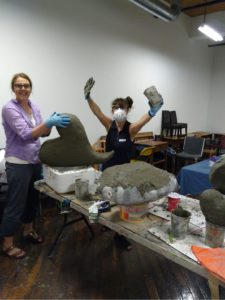NEMS NEWS February 2025
WHAT’S IN THIS NEWSLETTER
The folks who contributed to this issue deserve an enormous thank you. Not only did they contribute willingly (!), but they truly made this a special issue. To Jane Chaskey, Nikki Sullivan, Anabella Wewer, and Karen Sasine, my sincere appreciation for sharing your vision and inspiration.
If you, yes, I mean you, would like to be featured in the next Newsletter, please leave me a message at newenglandmosaicsociety@gmail.
And, a poem to lift your spirits as winter wraps up:
e.e. cummings
From Our Chair, Karen Stark
New England Mosaic Society Weekend Retreat!
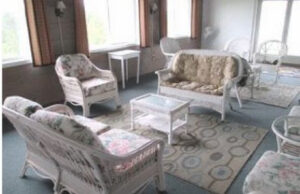 In celebration of the New England Mosaic Society’s 10th anniversary, we will be having a member’s weekend retreat on October 10-12, 2025, on Cape Cod. A full weekend of art activities and socializing are planned at the Sunset Lodge and Manor in the Craigville Retreat Center in Centerville. Centerville, near Hyannis, offers a true ‘old Cape Cod’ experience with a lovely town green, access to a private beach, and picturesque family cottages interspersed with the Center’s lodging, meeting, and dining locations.
In celebration of the New England Mosaic Society’s 10th anniversary, we will be having a member’s weekend retreat on October 10-12, 2025, on Cape Cod. A full weekend of art activities and socializing are planned at the Sunset Lodge and Manor in the Craigville Retreat Center in Centerville. Centerville, near Hyannis, offers a true ‘old Cape Cod’ experience with a lovely town green, access to a private beach, and picturesque family cottages interspersed with the Center’s lodging, meeting, and dining locations.
The retreat committee is working on finalizing plans but activities are likely to include talks, demonstrations, maybe a silent auction, and an opportunity to work on a group project. All meals are included starting with dinner at 5 on Friday through lunch on Sunday, so there will be many opportunities to get to know each other and gather in person! The Lodge has sunset views of the salt marsh, flexible meeting spaces, and a large, working stone fireplace in the living room, sure to be the site of evening get-togethers. A less than 10-minute walk takes you to the private beach. You can see it all on this YouTube video: https://youtu.be/DI2urk0DVW8?
Since Craigville Retreat Center is a non-profit organization that rents only to other non-profit organizations, we receive the advantageous pricing of about $350 per person (double occupancy), including Friday and Saturday night lodging and all 6 meals!
Renew or become a member today so you don’t miss out on this first-ever mosaic weekend!
_______________________________________
Take 5 – Jane Chaskey
1. BEFORE YOU BEGAN WORKING WITH MOSAICS, DID YOU HAVE A BACKGROUND IN ART?
Yes, I have always done some sort of art. Growing up in Ithaca, New York, I was involved with the local community art center and took classes there. I also began weaving when I was in my teens. I moved to NYC in 1980 and attended the School of Visual Arts. My husband is a model maker, so I began working with him, building models and props for displays, windows, inflatables, TV, and film, which we did for many years.
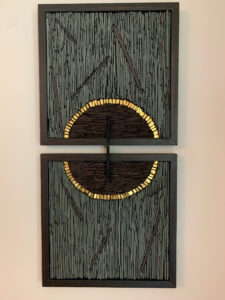 BISECTED
BISECTED
2. WHAT MOTIVATED YOU TO START MAKING MOSAICS?
I took a mosaic class at Orsoni in Venice while traveling around Italy in 2009 because it sounded fun. I was hooked immediately! I found the Society of American Mosaic Artists online and started following them. I attended my first SAMA conference in 2013, and I have been making mosaics ever since.
DO YOU DRAW INSPIRATION FROM OTHER ARTISTS?
Yes, I am constantly looking at art online. I like a wide range of artists from the Renaissance to the present.
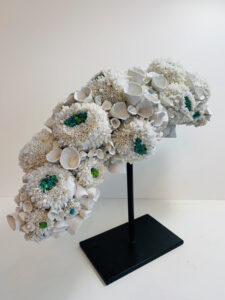 ATTACHMENT
ATTACHMENT
3. YOUR PIECES ARE DONE IN BLACK AND WHITE. ARE YOU PARTICULARLY DRAWN TO THAT PALETTE FOR A SPECIFIC REASON?
I don’t know why I am drawn to Black and white so much. I do like color and try to add little pops of it in my work, but when I try to work in a lot of color, it just doesn’t feel right to me.
4. WHAT IS THE BEST ADVICE YOU’VE BEEN GIVEN THAT YOU WISH YOU HAD KNOWN WHEN YOU STARTED YOUR ARTISTIC JOURNEY?
Have more confidence and don’t care so much about what people think of your art; just make what feels right to you.
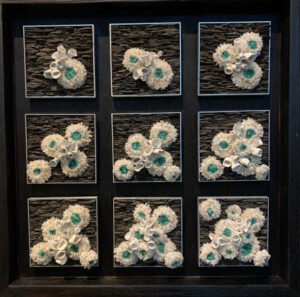 GENERATIONS
GENERATIONS
5. WHAT IS THE MOTIVATION OR INTENTION BEHIND YOUR PIECE, “BOUND?”
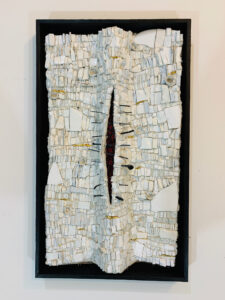
6. YOU USE VARIOUS MATERIALS FOR YOUR WORK. HOW DO YOU GO ABOUT SELECTING TESSERAE FOR EACH PIECE?
I like to try new things. When I see something that catches my eye, I think about how I can incorporate it into my artwork. Sometimes, it works, and sometimes, it doesn’t.
7. HOW HAS YOUR ART EVOLVED THROUGH THE YEARS?
When I was in school I concentrated on printmaking and figure drawing, all 2D and mostly realistic. Now, I create a lot of abstract and 3D pieces with my mosaics.
8. WHAT MEMORABLE FEEDBACK HAVE YOU RECEIVED IN RESPONSE TO YOUR ART? WHAT ARE YOU CURRENTLY WORKING ON?
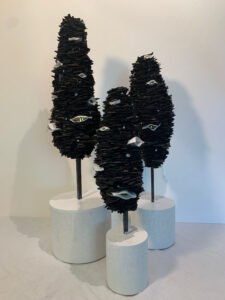
Four is Too Many is based on the theory that items in threes create visual interest, balance, and focal points
I just started a new series based on seed pods. I am just in the beginning stages, so not much to show yet. But my piece Four Is Too Many is the first piece in the series. I am also beginning to incorporate encaustics with my mosaics.
Find Jane Chaskey on Instagram: https://www.
Nikki Sullivan Answers the Question: What Mosaic Inspired You and How You Incorporated Some Element of that Design into Your Own Work?
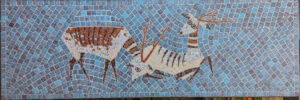
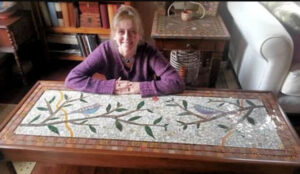
________________________
TAKE 5 – ANABELLA WEWER
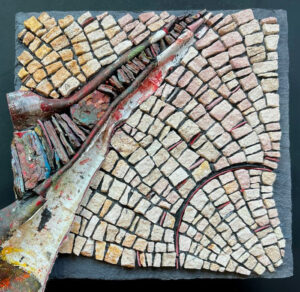
1. How did you begin your journey as an artist? When did you realize this was the path you wanted to pursue?
I am a graphic designer who spent my early years in print advertising, eventually transitioning to Web design and apps. Though I grew up making things, I had plenty of work as a young professional with a family. A couple of years into transitioning to designing for the Web, I realized I really missed the tactile aspects of design; I craved the smell of printing presses and picking just the right paper or directing a photographer for a job. Looking at everything on the screen made me realize I missed touching materials, so I started exploring pottery and letterpress printing and picked up photography again. While chaperoning my son’s choir trip to Italy, I happened upon a woman working in micro-mosaics at the Savelli Gallery near the Vatican. I had no idea what I was looking at — I didn’t even know it was called micro-mosaic — but I was mesmerized by the process and the color blending. That discovery, and the lack of time for more than one hobby, made me abandon all the other media and focus on mosaic in all of my spare time. It took a few years of learning and experimenting until I made something that I didn’t think was derivative of any of the instructors I was lucky to learn with and think of myself as an artist beyond being a graphic designer.
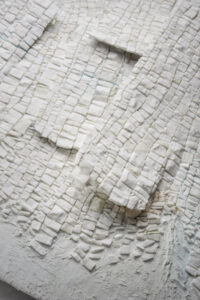
2. When I think of Venezuelan art, the first image that comes to mind is a traditional piece with vibrant colors and an entire canvas of images. The recent retrospective exhibition at the Guggenheim shows how the landscape of modern Venezuelan art has changed, becoming more streamlined and muted. Do you draw from either of these influences?
Funny you’d mention that Guggenheim exhibit, as it really made me look at Gego, the featured artist, in a way that I never had. Trained as an architect, her works are monumental and can be found all over Caracas, where I grew up. (https://www.guggenheim.org/
I had always thought color was natural to me, and it is, but after I saw the works in the context of museum exhibits, I realized I had been learning about color theory, how colors are made and how they affect each other, simply by growing up around it. I couldn’t have explained where this instinctive understanding of color came from before, but now I think that it was simply observing all these works, even if not technically studying them, daily.
My tendency is towards muted colors and simple lines, so to get back to your question, yes, I think Gego’s work also influenced the way I appreciate art, considering shadows and spacial relationships, and instilling a love for concrete and seeing the beauty in sturdy, industrial structures.
3. What topics do you explore in your work?
I started to create beautiful objects, explore materiality, and keep my hands connected to tangible things. My driving force is often to capture a moment in time and to discover and provide beauty in unexpected places. However, when getting work together for the Art Complex Museum exhibit, I was invited to participate in 2023 (postponed from 2020), which centered on topics related to the impact of humans on our environment; I realized that a lot of my work is about my observations and concerns about forces, natural and man-made, on the planet. I also found that through art, we can have conversations that would otherwise be really difficult to start when talking to strangers, but it is much easier to talk about climate change with climate deniers when we start by talking about a piece of art I made. That sort of thinking is now more central to the work I am making.
4. Regarding your SAMA piece, The Long View, could you tell us what the creative process was like and if you experienced any challenges along the way?
“The Long View,” along with “2°C,” also at the 2024 MAI exhibit, was made for that Art Complex Museum exhibit I mentioned. I have long been concerned about sea creatures being found with bellies full of plastic, so I started keeping the plastic I find, especially on beaches, instead of disposing of it, to address that issue. While researching, I ran across studies about how much microplastics we humans consume, and the piece became more universal.
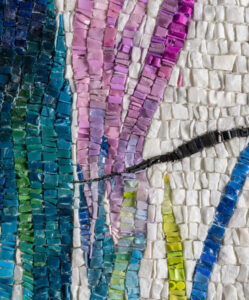
I didn’t want to feature obvious debris, because the nature of these plastics in our environment is that they break down and become tiny pieces floating about in the oceans and in our food and drinking water, almost unseen and unrecognized. As a process mosaicist, it is the experimenting with materials and the actual making that I am in love with, so I started doing tests using found plastics as my main material. They are all different and in different stages of breakdown, so they all cut differently, and I had to figure out how to cut them into tesserae shapes so they retained their color or how to use the whitish edges that are often present when cutting plastic.
One of my challenges was admittedly self-imposed, but it did delay the completion of the piece by a couple of years. I had collected this bottle of Aussie shampoo, which has a beautiful hue, and I was determined to find glass that matched it. I had decided earlier that the message of plastics invading our environment was going to be represented by smalto standing in for the natural world, and it would be “polluted” by plastic, my lines of glass turning into plastic as I went along, so I needed to transition between the plastic and the glass in gradients as I like to make them. It turns out that the chemicals that make up that magenta color are really unstable, so it is almost impossible to achieve that color with glass. It was a long search and there was even a desperate call on social media that led to many beautiful interactions with mosaic artists all over the world, who sometimes sent me 2 to 3 pieces of smalti they had that were close to that color. In the end, I did use a lot of those bits, but I also had to mix Epoxy Sculpt (ultimately a plastic), to bridge the color gradation. I could have simply skipped that color and made life a lot easier for myself, but I am just that stubborn sometimes and the color was just the right one for that space, so I persevered. I have no problem waiting that long for a piece to be just right for me, and so I gave it the time it needed. No regrets.
The design of that mosaic is really abstract. It could have been anything, but I was simultaneously learning about watercolor painting, and was fascinated by the way colors mix and pool. Because I didn’t know what I was doing, the paper was wrinkling, so I just used those experiments as the design for the piece. The colors were dictated by the plastics I found.
5. You are celebrated for your hammer and hardie technique and adherence to classical andamento rules (amongst other things). How did you come to embrace this method and philosophy?
I was lucky that my first workshop was taught that way, and then the instructor advised me to study in Italy once I told her what I wanted to do, so it’s been that way since day one. The more I understood andamento, the more it became fundamental to my practice, and eventually, it was a challenge to see if I could achieve certain effects while adhering to the order of lines. It’s part of what makes it fun for me! As for hammer & hardie, it’s just how I learned, but I started analyzing it in an almost scientific way, understanding the physics of cutting and how the energy travels through our bodies, resulting in more or less successful cuts. Again, it’s all about the process! A hammer allows me to make very precise cuts without using as much energy or putting strain on my wrists, and I can cut almost anything with it, so it’s a natural choice for me. I maintain that there is also less material waste when I can make precise cuts.
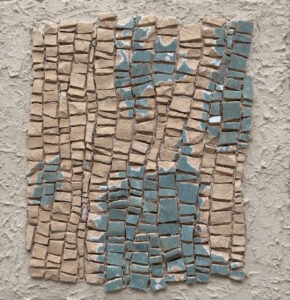 6. How do you select your colors, and do you choose them before starting a piece?
6. How do you select your colors, and do you choose them before starting a piece?
The colors are almost always dictated by the story I am trying to tell. Because I conceive my pieces ahead of time, I do choose palettes at the beginning, but I keep it all open to change because of the interactions of color and the effect of the mortar, and even the cuts, on how the color reacts.
“Ebb Tide” – 8” x 8”, 2024, ceramic
7. What is the best advice you were given that you wish you had known when you started your artistic journey?
The mortar and the interstices are as much part of the mosaic as the material choices and the design.
8. What projects are you currently working on?
I am currently exploring working in a smaller format without reducing the size of the tesserae, partly because of my current chosen lifestyle (we have been largely nomadic for a few years, as we travel and explore the national parks), but also because it sometimes takes me 300-400 hours to create those large works. I feel like I’d like to finish something in days instead of months or years!
For more information, see: https://www.
________________________
![]()
Karen Sasine has always been an artist. Her passion for color and pattern started very early with a love of textiles and design, earning her a scholarship to The Savannah College of Art and Design, graduating with a BA in Interior Design.
Mosaics found her in 2001 with the start of Rainbow Mosaics and has proven to be a perfect medium with its variety of materials and styles. Over the past 24 years, she has honed her mosaic art skills with world-renowned artists, mostly through SAMA (The Society of American Mosaic Artists), and has spent the past 10 years mentoring through her successful Facebook group Mosaic Mentoring with a worldwide membership of close to 50k members. She also sells her favorite supplies and has an online course as well as a beautiful line of colorants that enhance mosaic artists’ visions.
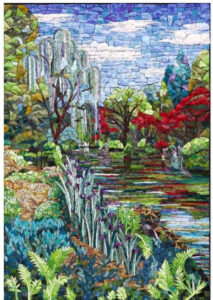
Sharing her knowledge through teaching and mentoring has brought Karen immense joy. After a near-death experience last October, she woke up and vowed to share her knowledge and regain her mosaic skills. She has since traveled to Italy, where she will be going again next August, and the Netherlands to study. She is so excited to come to Boston this summer to teach too!
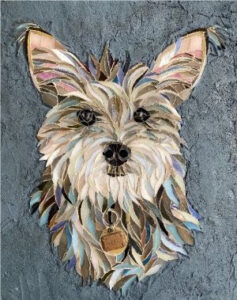
She welcomes you to her continued venture with Rainbow Mosaics and many other amazing surprises that will be coming up! Please keep in touch with her at http://www.rainbowmosaics.com
________________________
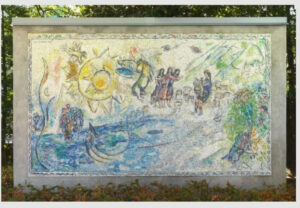
National Gallery of Art Unveils Chagall Mosaic Orphée (1969) in the Sculpture Garden on November 27, 2013, Reprinted from the Department of Communications, National Gallery of Art
Washington, DC—The National Gallery of Art has unveiled a permanent and public home for one of Washington’s hidden treasures—an exquisite glass and stone mosaic designed by Marc Chagall (1887–1985).
Adorning a garden wall at Evelyn and John Nef’s private residence in Georgetown for nearly four decades, the mosaic was part of Evelyn’s momentous 2009 bequest of some 100 works from the couple’s 19th- and 20th-century collection of prints, drawings, and illustrated books.
“The Gallery is delighted to share Evelyn and John Nef’s most prized possession—exactly as she desired,” said Earl A. Powell III, director, National Gallery of Art. “The mosaic is an exceptional gift from an honored friend whose story lives on.”
The mosaic (approximately 10 by 17 feet) was a special gift from Chagall to the Nefs. After visiting the couple’s home at 28th and N Street NW in 1968, the artist declared, “Nothing for the house. The house is perfect as it is. But I will do something for the garden: a mosaic.” Chagall designed the work at his studio in France and hired Italian mosaicist Lino Melano to create it using Murano glass, Carrara marble, and natural colored stones from Italy. Three years later, Melano oversaw its installation into a 30-foot brick wall built for the purpose. The couple celebrated its completion on November 1, 1971, with the 84-year-old Chagall present. It was one of the first large-scale outdoor Chagall mosaics to be installed in this country, and was soon followed by another, the now-renowned Four Seasons mosaic in Chicago.
Comprising ten individually fashioned panels, each measuring approximately 5 by 3 1/2 feet and mounted on concrete, the mosaic presents colorful figures from Greek mythology—Orpheus with his lute, the Three Graces, and the winged horse Pegasus.
In the bottom left corner of the mosaic, a group of people wait to cross a large body of water. According to Chagall, this scene alludes to the immigrants and refugees who undertook ocean journeys to America. The scene is also a reference to his own past: smuggled out of Nazi-occupied France by the International Rescue Committee during World War II, the Jewish artist found safe haven in New York. At lower right, the artist included a pair of lovers beneath a tree. When Evelyn inquired if the couple was a depiction of her and John, Chagall said, “If you like.”
________________________
Other Exhibits and Mosaic Motifs of Interest
The Barbie Exhibit, The Design Museum, London
Opening to coincide with the 65th anniversary of the Barbie brand in 2024, the exhibition explores the story of Barbie through a design lens, including fashion, architecture, furniture and vehicle design.
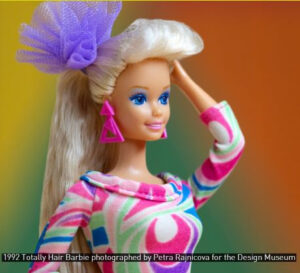
________________________
Dolce-Gabbana Miss Sicily Queen Regina Mosaic Satchel
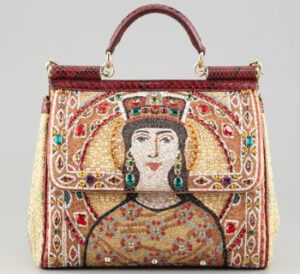
Prophet Isaiah Robertson’s Second Coming House (Niagara Falls, New York)
Striking art environment created by Prophet Isaiah Robertson (1947–2020), a self-taught artist who transformed his home into an immersive religious artwork, featuring a dramatic 25-foot painted cross and intricate religious imagery crafted from wood, paint, and beadwork both inside and outside the property. As the only artist-built environment of its kind in Western New York.
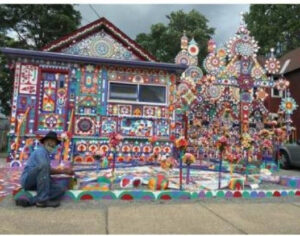
________________________
Jean-Michel Othoniel
is a French contemporary artist who has worked in various artistic media, including film, installation, photography, and sculpture.
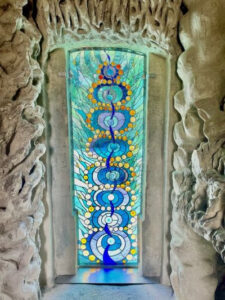
Copyright ©2025 NEMS, All rights reserved.
Our mailing address is:
https://www.
Want to change how you receive these emails?
You can update your preferences or unsubscribe from this list
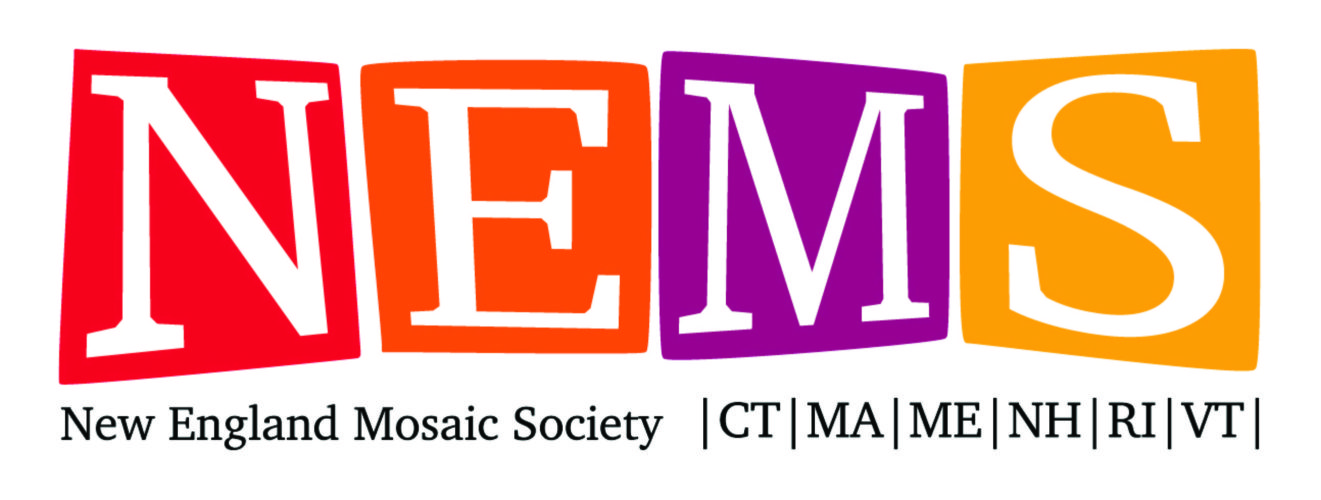
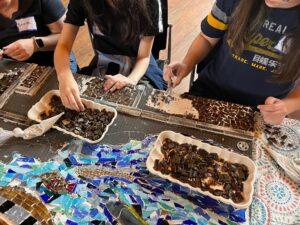
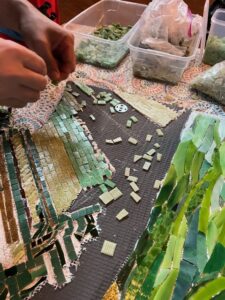
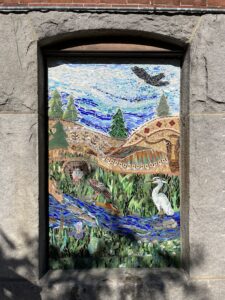
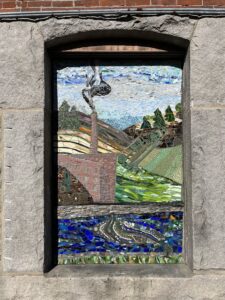
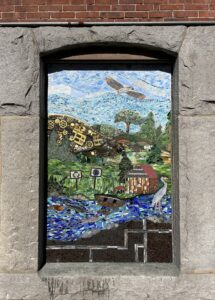
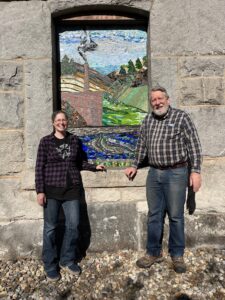 Art sometimes gets lost when there’s a strong societal emphasis on technology. Yet the intersection of art and technology helps to preserve history and provides an understanding of the societal and cultural trends that impact the community: people, land, river. We wanted this mosaic project to tell a story through art by involving the community as artists and makers.
Art sometimes gets lost when there’s a strong societal emphasis on technology. Yet the intersection of art and technology helps to preserve history and provides an understanding of the societal and cultural trends that impact the community: people, land, river. We wanted this mosaic project to tell a story through art by involving the community as artists and makers.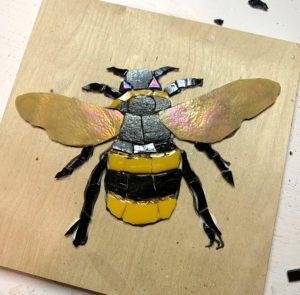
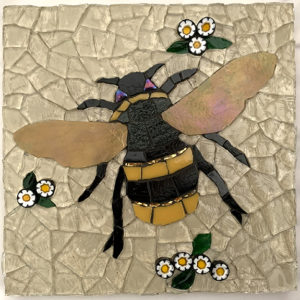
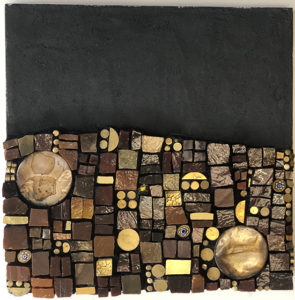
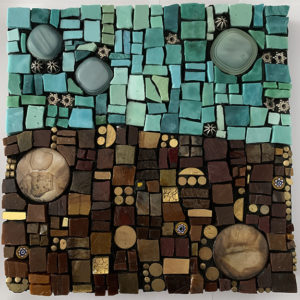
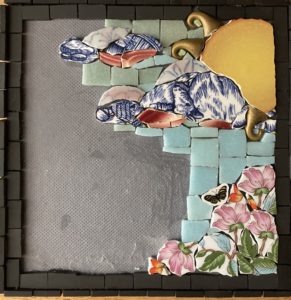
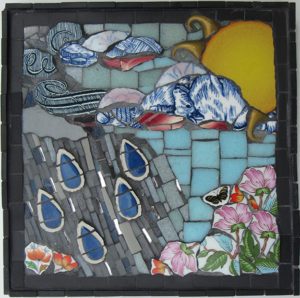
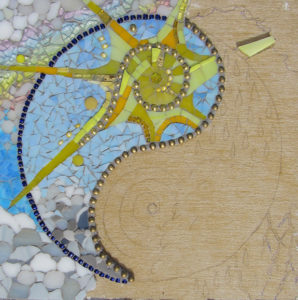
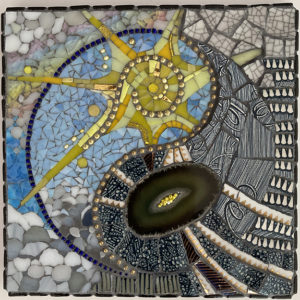
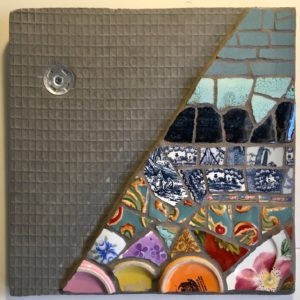
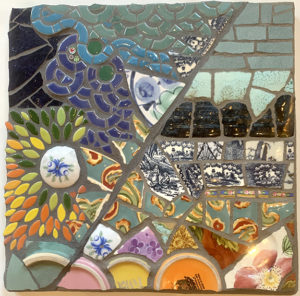
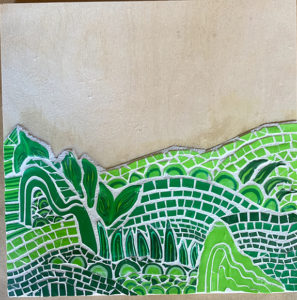
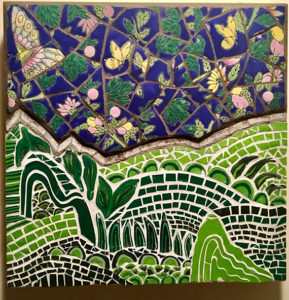
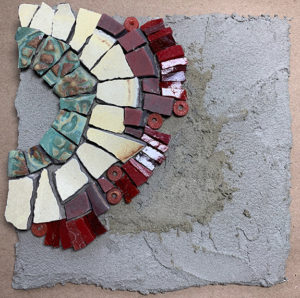
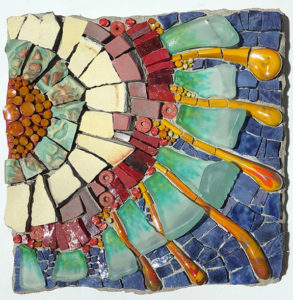
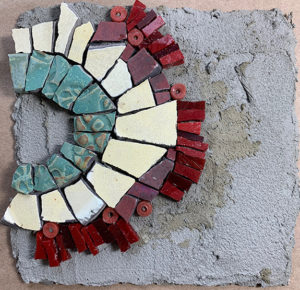
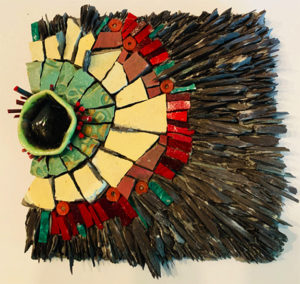
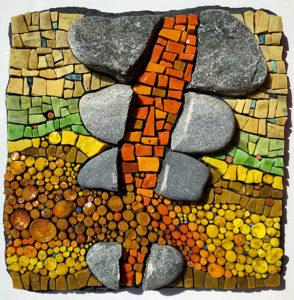
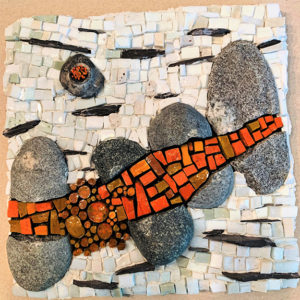
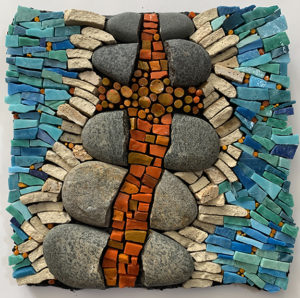
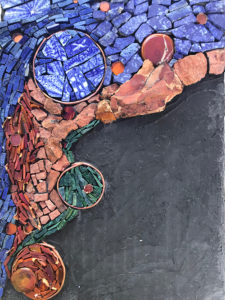
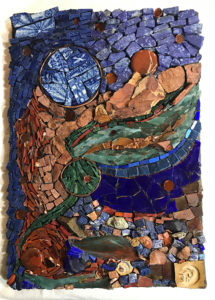
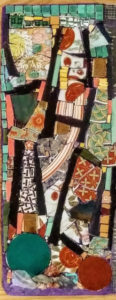
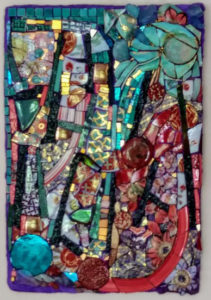
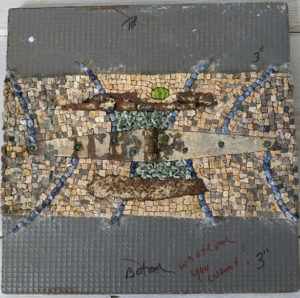
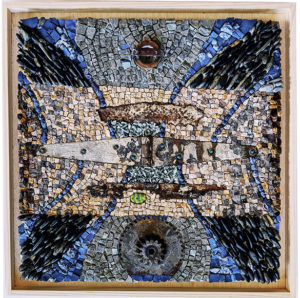
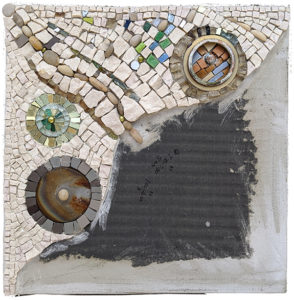
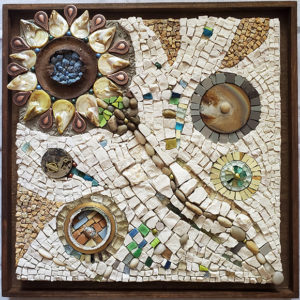
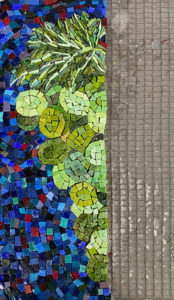
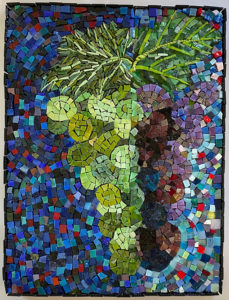
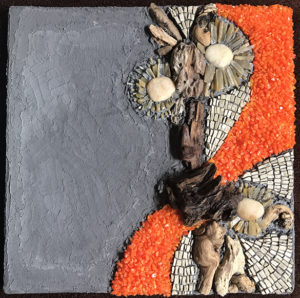
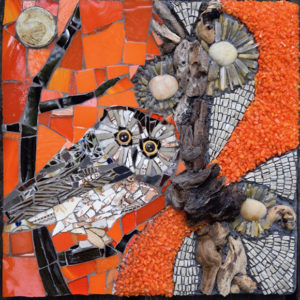
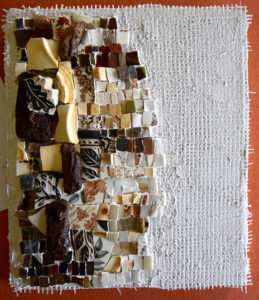
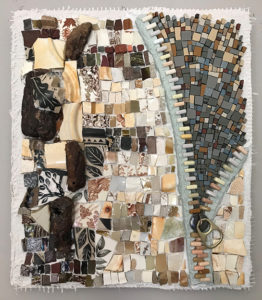
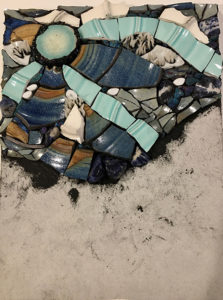
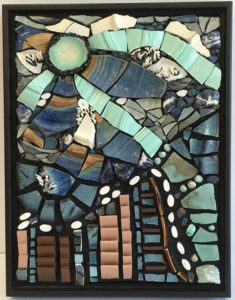
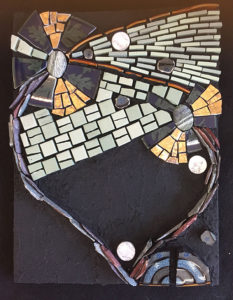
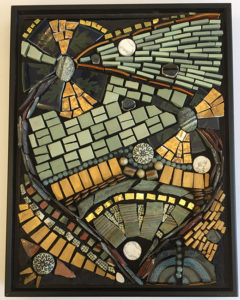
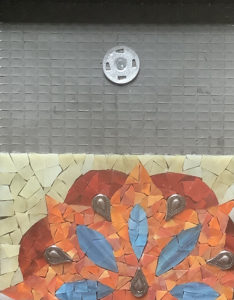
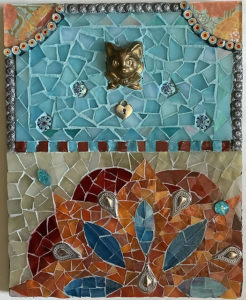
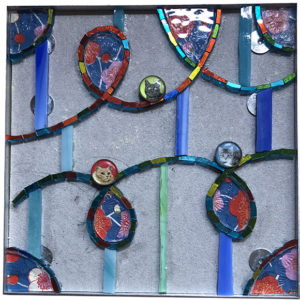
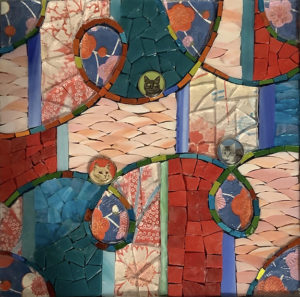
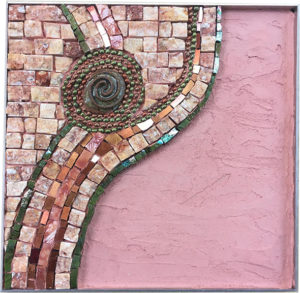
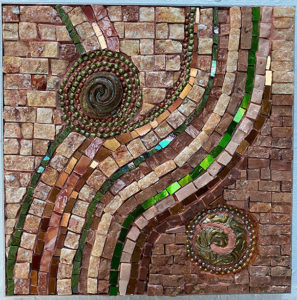
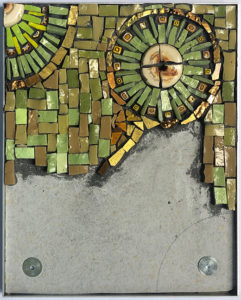
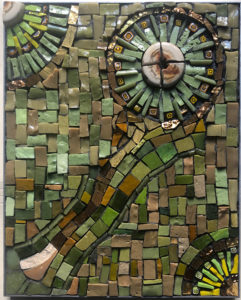
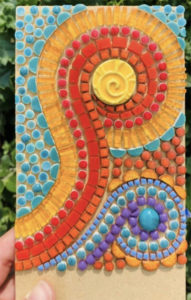
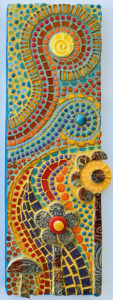
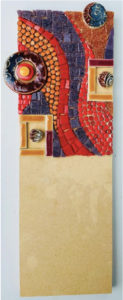
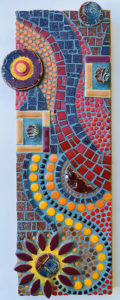
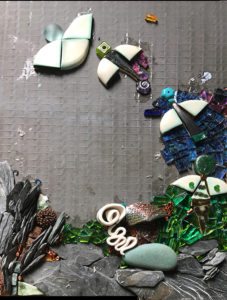
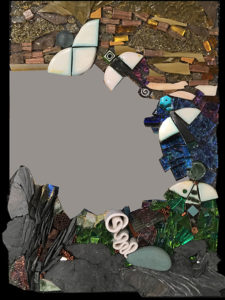
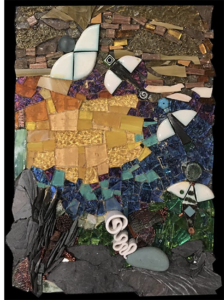
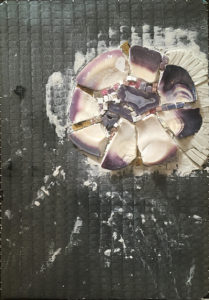
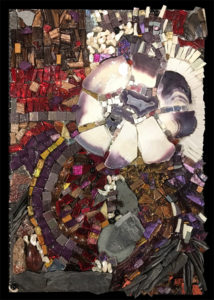
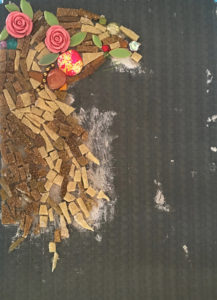
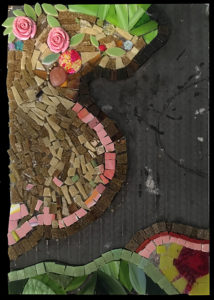
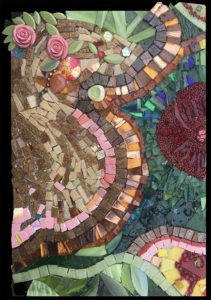
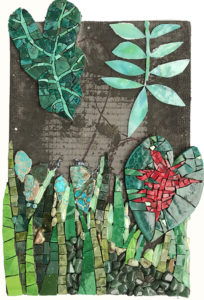
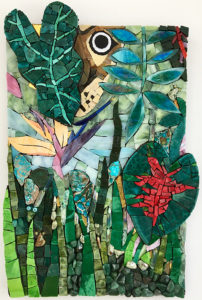
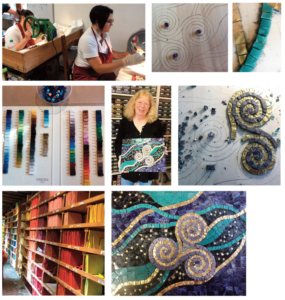
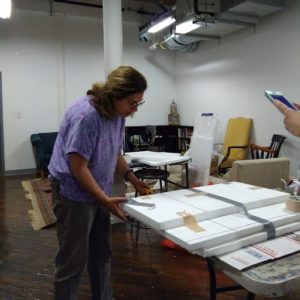 On June 15, I taught an informal workshop on mosaic sculpture to NEMS members participating in the upcoming Field of Hearts-Art in the Orchard Exhibit, organized by Laurie Frazer and taking place in Northampton MA. The workshop took place in a classroom space near my studio in Lawrence MA. With my instruction, members worked on individual forms of heart shapes using a hot foam knife, foam adhesive and nails on styrofoam.
On June 15, I taught an informal workshop on mosaic sculpture to NEMS members participating in the upcoming Field of Hearts-Art in the Orchard Exhibit, organized by Laurie Frazer and taking place in Northampton MA. The workshop took place in a classroom space near my studio in Lawrence MA. With my instruction, members worked on individual forms of heart shapes using a hot foam knife, foam adhesive and nails on styrofoam.